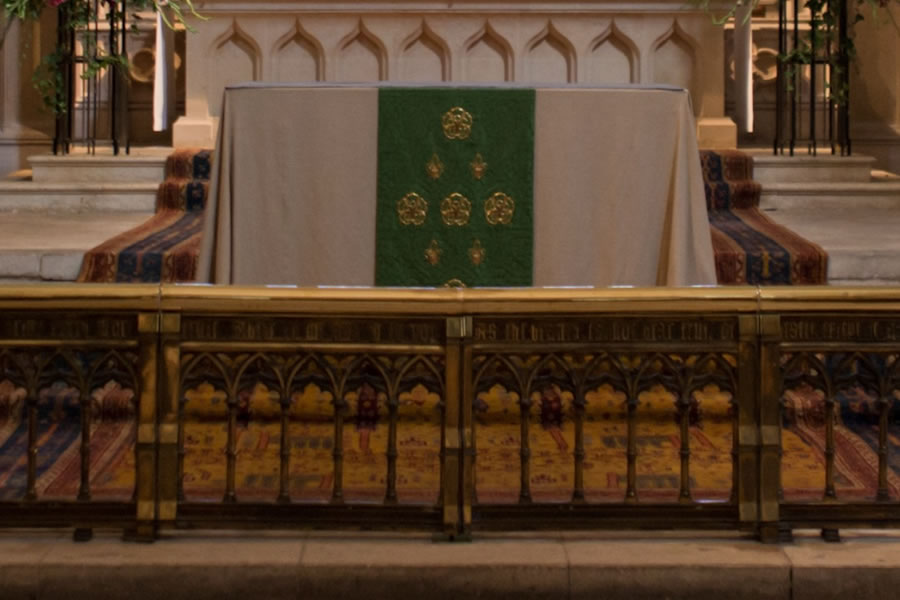
The Altar or Communion Rail (Part II of III)
03-01-2020Letter from the PastorFr. Don Kline, V.F.Dear Brothers and Sisters,
I want to address the practical notion of how we are called to make use of the Communion rail. Currently, the people of God approach the priest, deacon or extraordinary minister of Holy Communion to receive Our Lord. The problem is that once someone receives Holy Communion, the person is forced to make way for the person coming up next in line. The danger is that this way of encountering Our Lord in this intimate moment can be lost because the person may feel hurried, if not obligated, to move along so the next person in line can step up to receive Holy Communion. The feeling that you have to "move along" or "make way" for the next person in line can be problematic for several reasons. A feeling of being rushed may cause a person who is receiving Holy Communion to miss out on a chance to express a proper devotion to Our Lord. A person may rush by the décor, i.e., the nativity scene, flowers, the candles, the vestments, the statues located in the sanctuary. There is also the danger that Holy Communion becomes too individualistic and people forget the communal part of Holy Communion.
In his column, The Communion Rail and Complementarity, Rev. Jerry J. Pokorsky writes that there are many eternal benefits to having the Communion rail in a Catholic Church. These positive effects include the fact that a priest "is more aware of his role as a mediator in Christ in prayer and worship. His role as a spiritual father becomes clear as he emerges from the Holy of Holies to distribute Communion."
Fr. Pokorsky also expressed the significance of the pastor's role in feeding God's people with the Bread of Life. He notes that the words for pastor and panis (bread) – both from pa – "to feed." He concludes that the priest's role in distributing Communion is an "essential part of the priesthood." This helps us see why the priest (and the deacon) are the ordinary ministers of Holy Communion and the laity are the extraordinary ministers of Holy Communion.
What does all this mean for you? It has to do with a more proper way of receiving Our Lord in Holy Communion. As you approach the sanctuary to receive, you may kneel or stand all along the Communion rail. This way you are given a brief time to contemplate the artistry of the altar, the tabernacle, the Crucifix, and the entire sanctuary. When you pause, even if only for a few seconds, the priest will bring you the Host. As Fr. Pokorsky points out, "the priest is moving and working hard in his fatherly task. Shoulder to shoulder, the faithful receive from the table of the Lord as a family. There is no rush to depart. All of this reverses the individualistic dynamic of receiving while standing in a Communion line."
He concludes that: "the Communion rail not only links the priest and faithful to Jewish worship, but it is also a beautiful architectural symbol that accentuates the harmonious and complementary relationship between priest and people, between Christ and His Church."
The Mass, after all, is a foretaste of heavenly glory and the communion of the saints:
BACK TO LISTThen I saw a new heaven and a new earth; for the first heaven and the first earth had passed away, and the sea was no more. And I saw the holy city, new Jerusalem, coming down out of heaven from God, prepared as a bride adorned for her husband; and I heard a loud voice from the throne saying, "Behold, the dwelling of God is with men. He will dwell with them, and they shall be his people, and God himself will be with them; he will wipe away every tear from their eyes, and death shall be no more (Rev. 21:1-4)